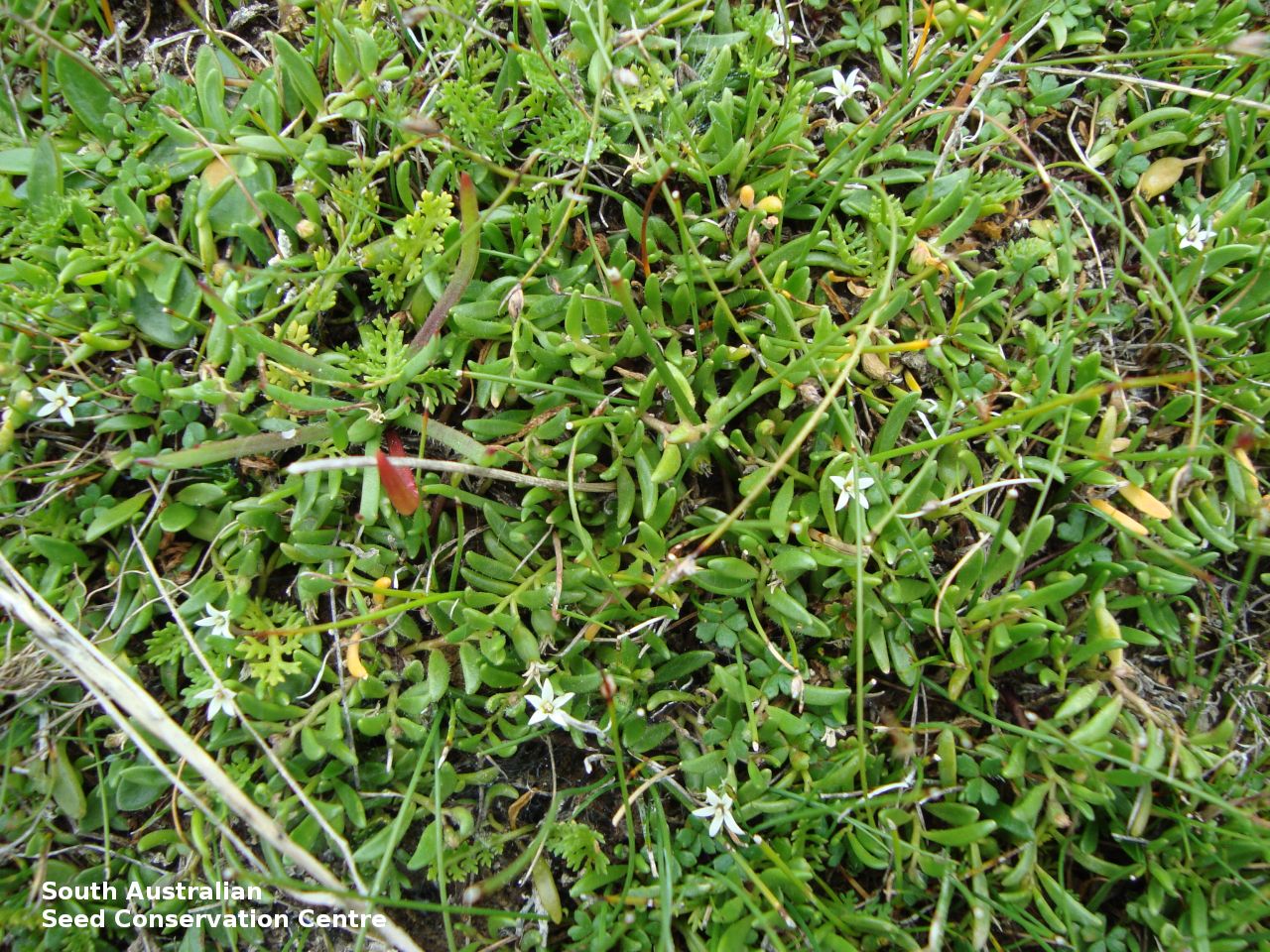
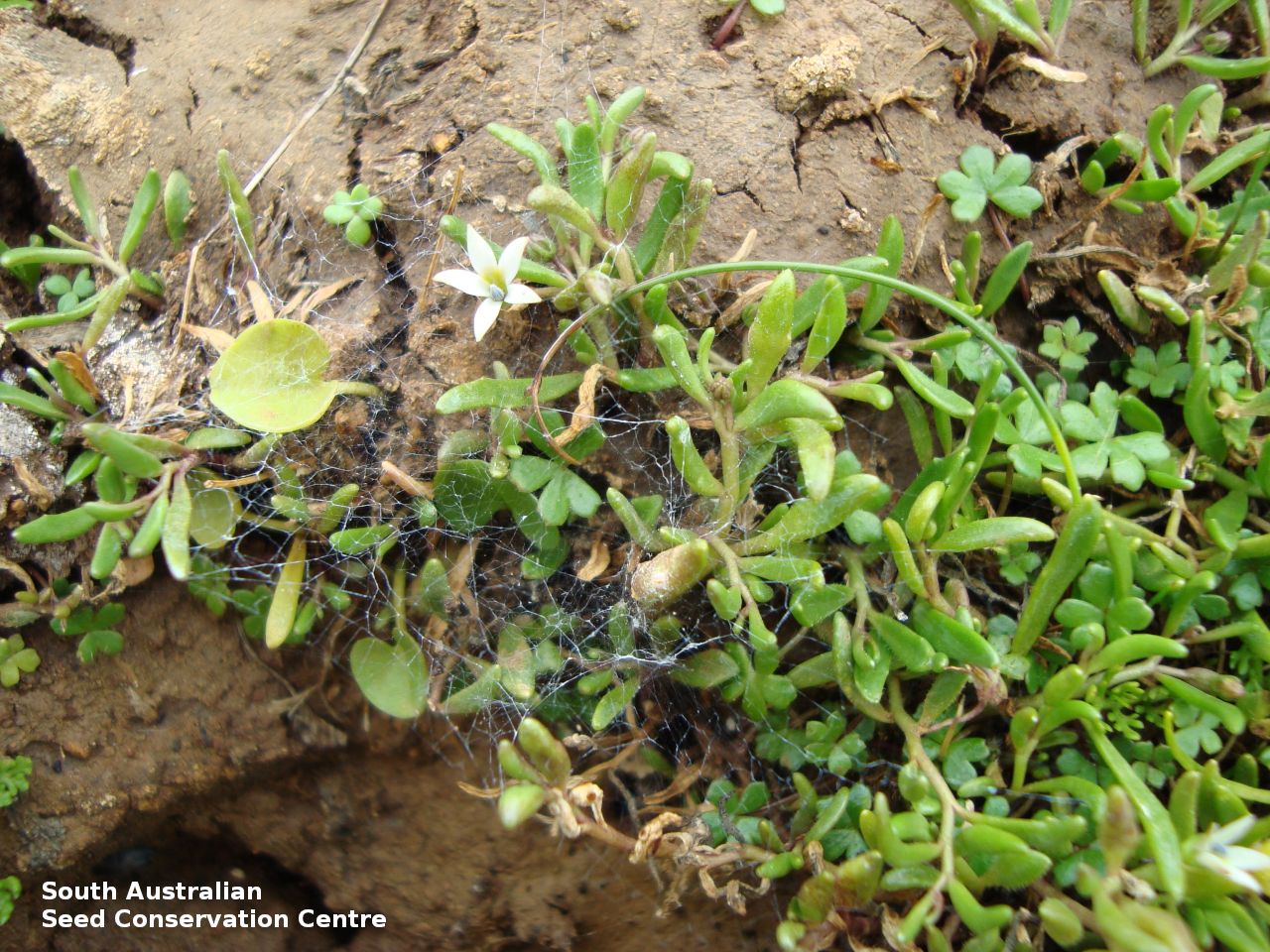
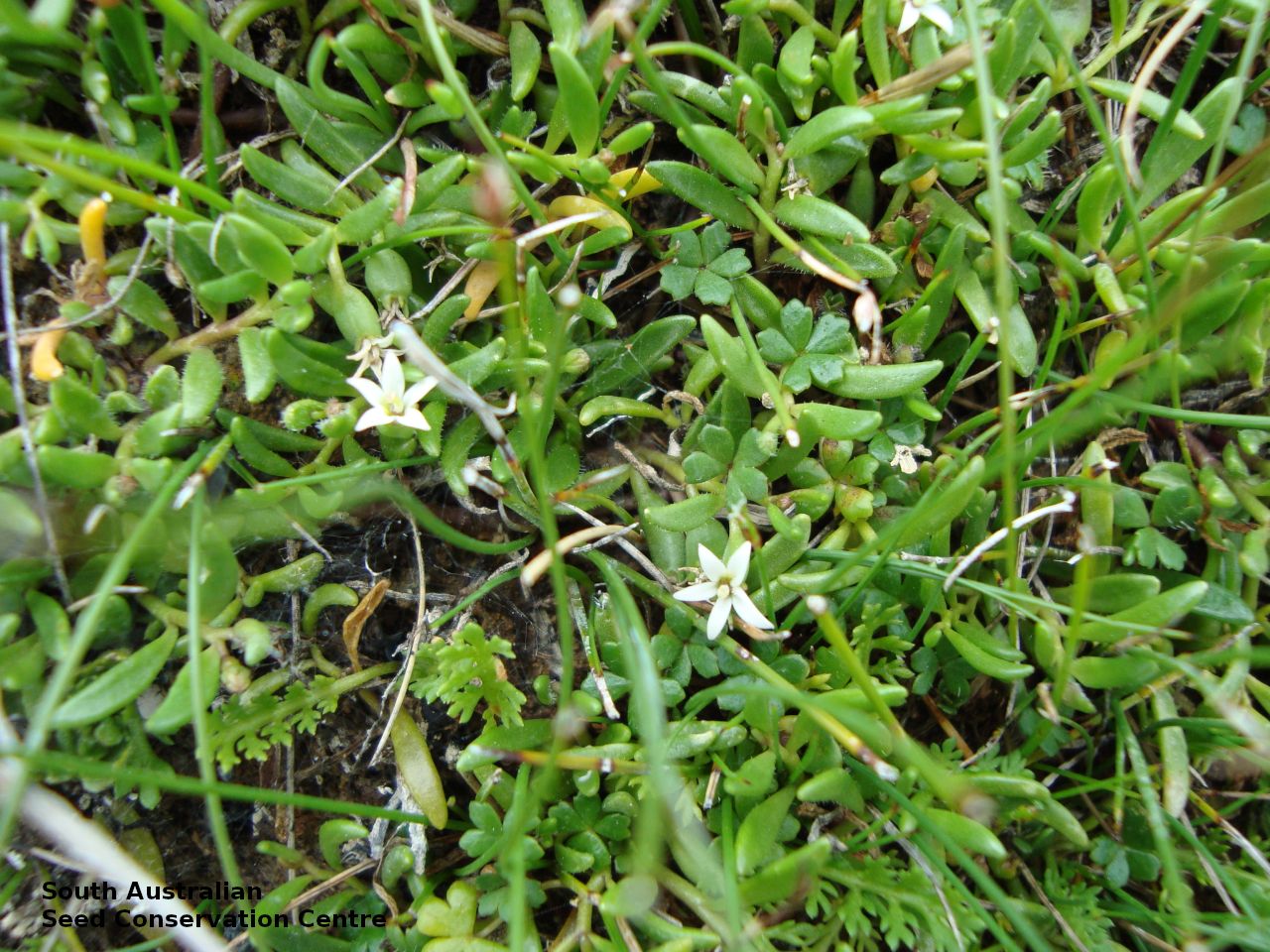
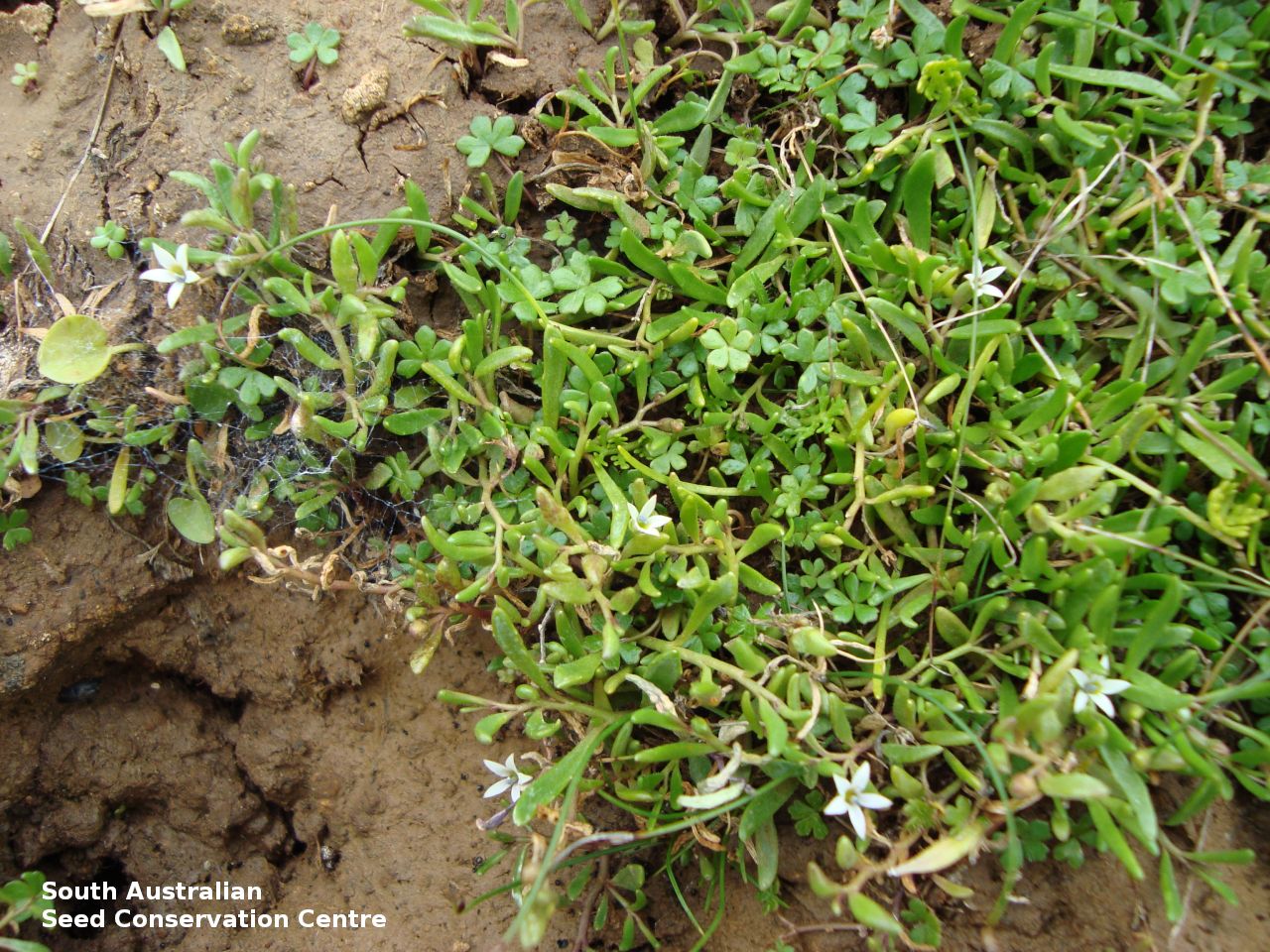
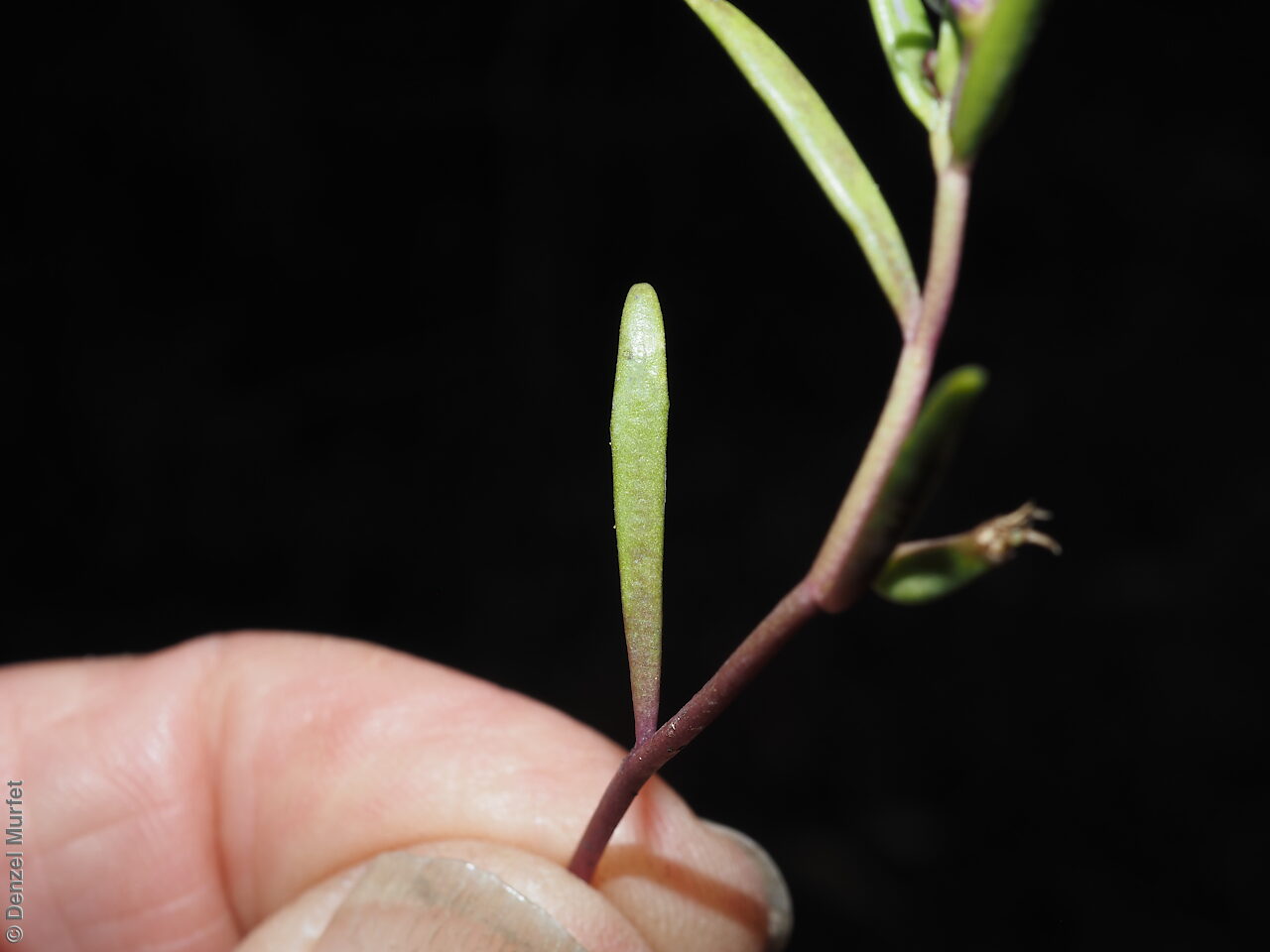
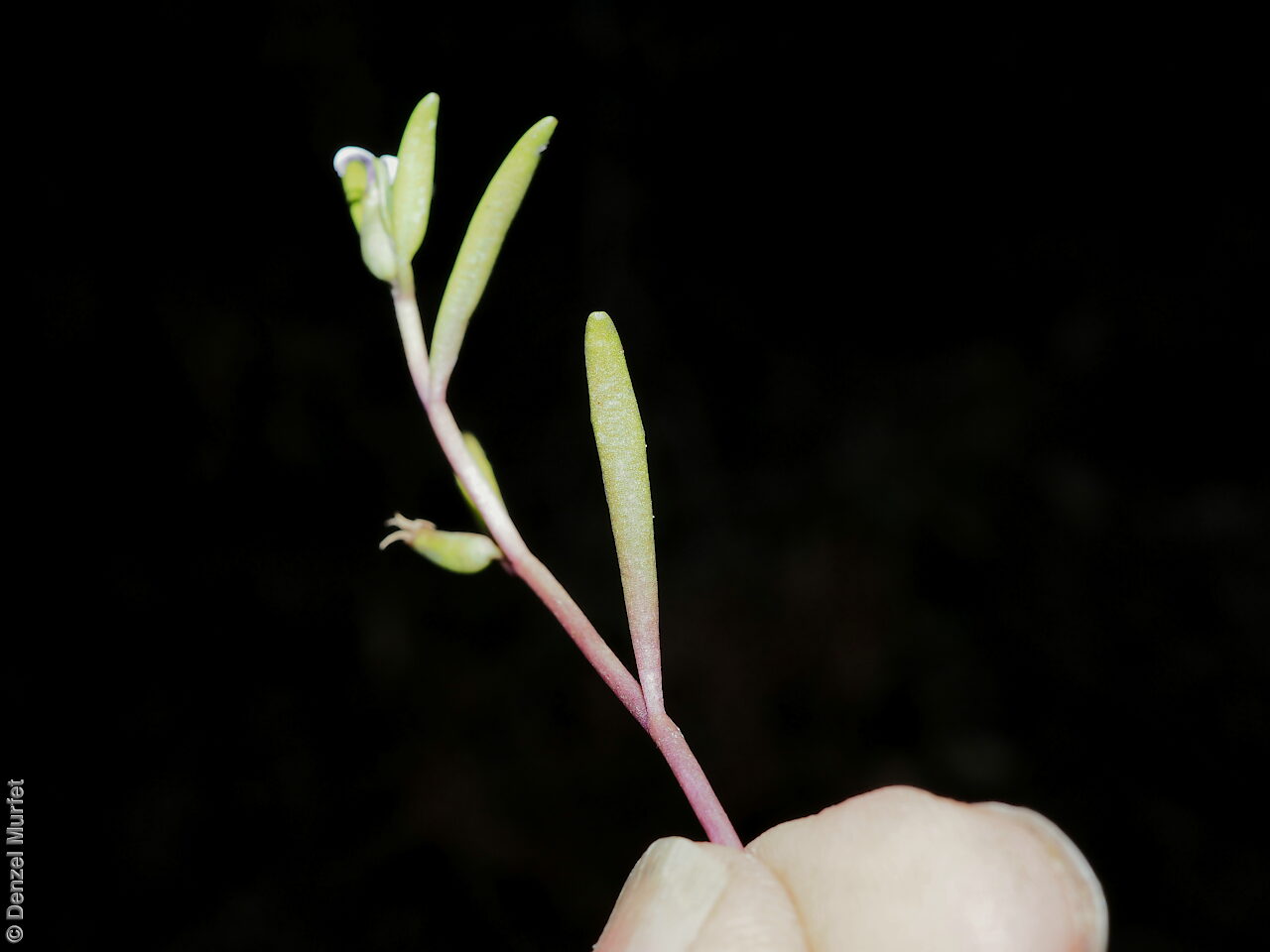
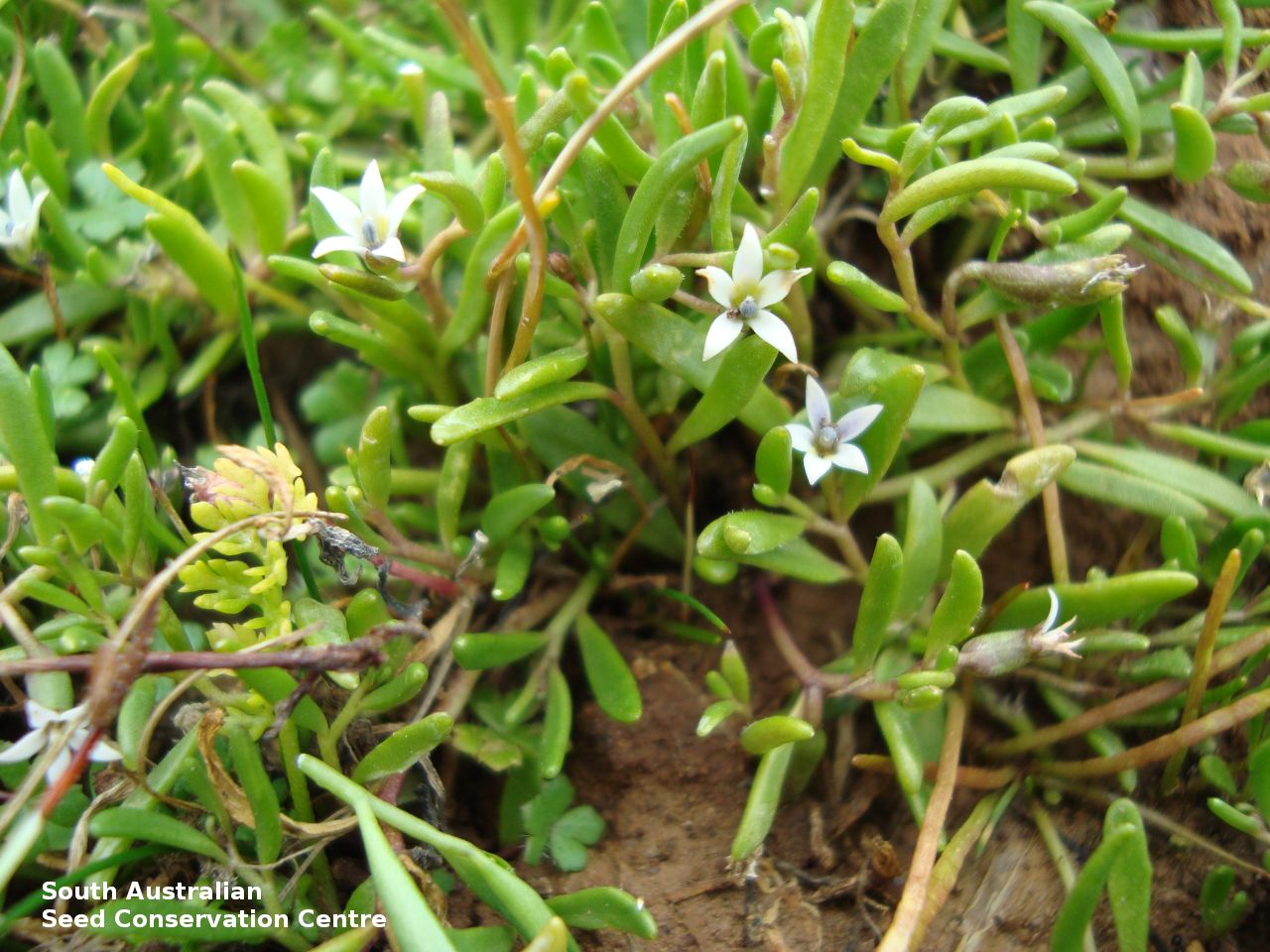
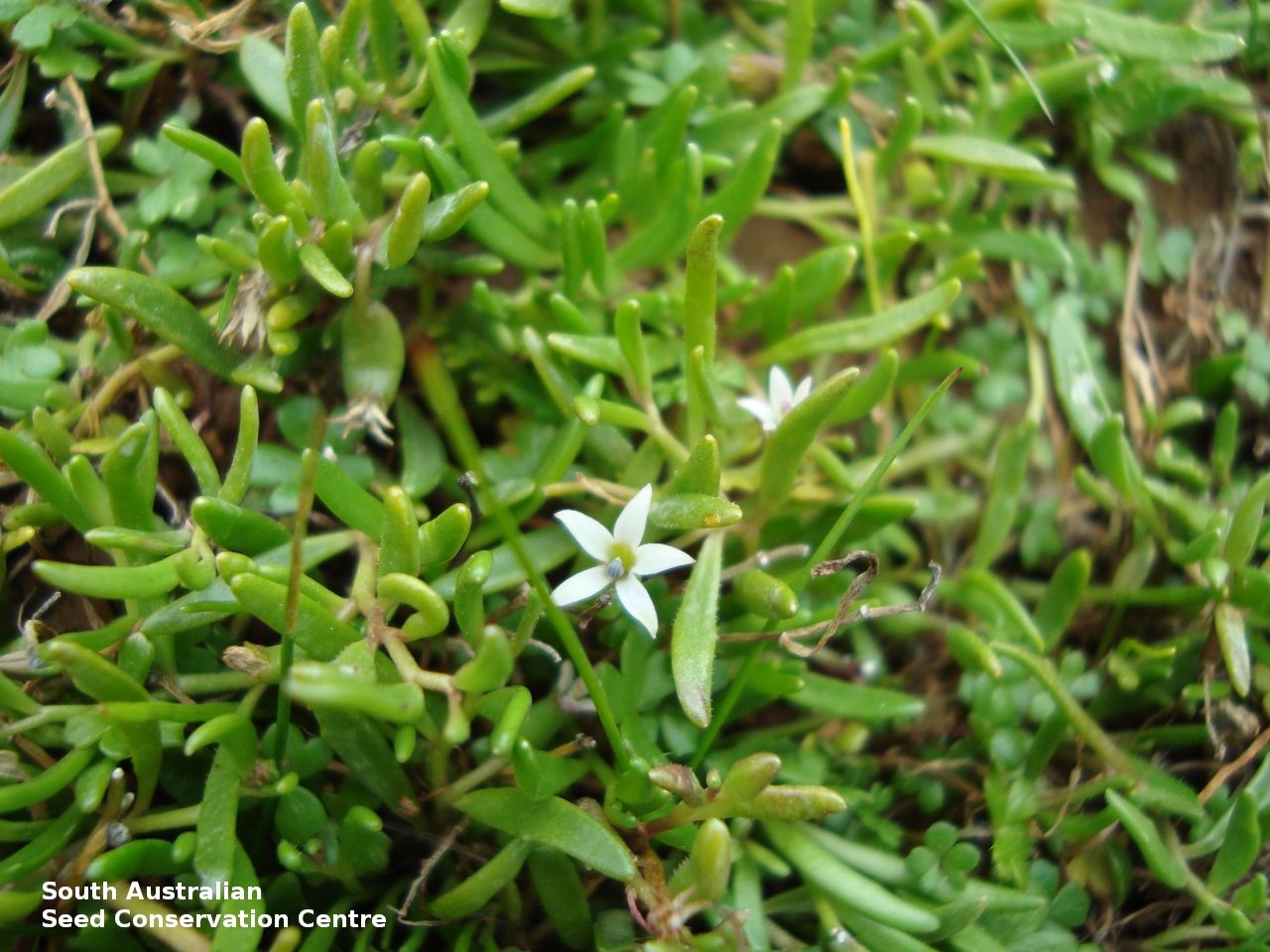
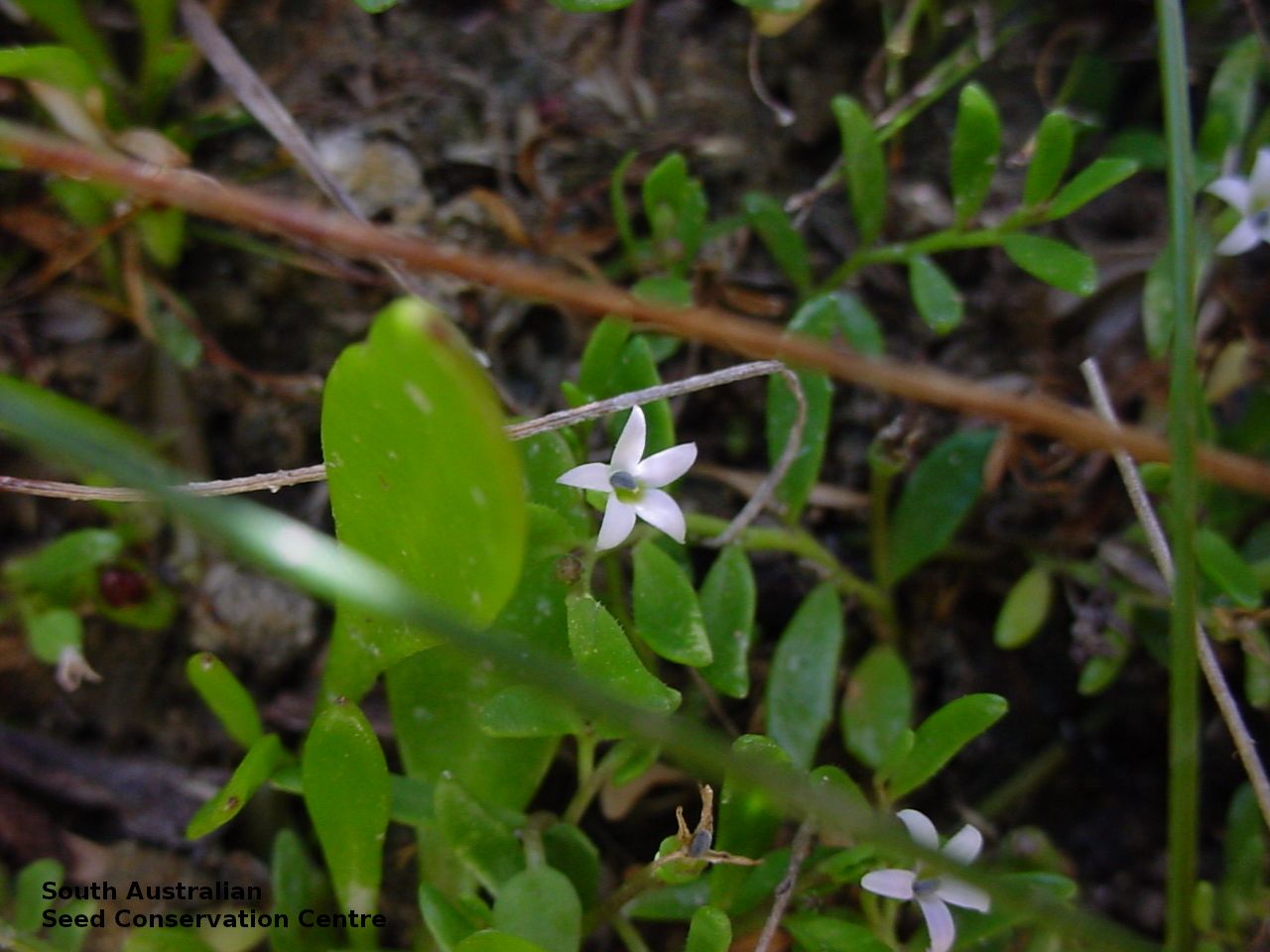
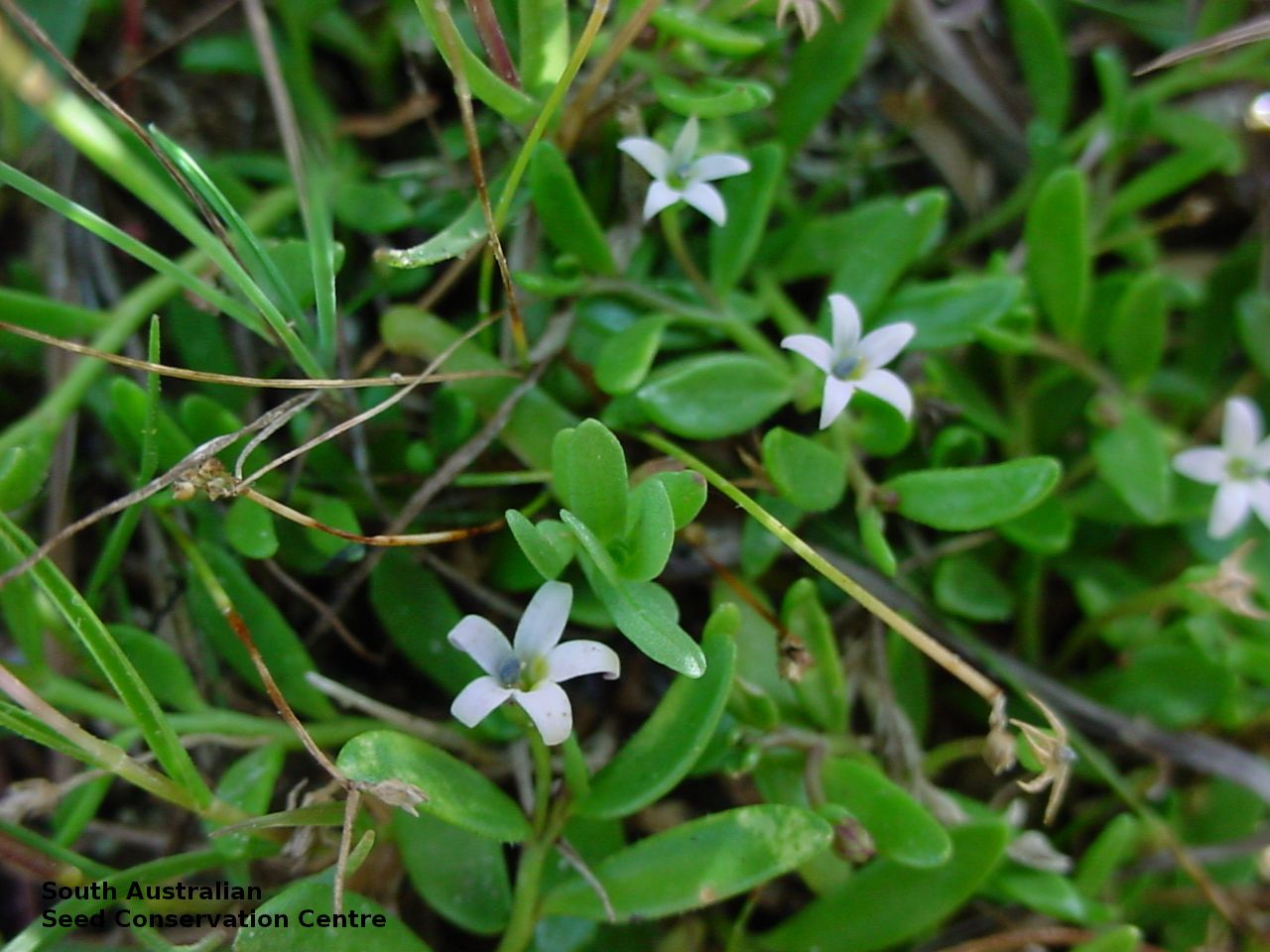
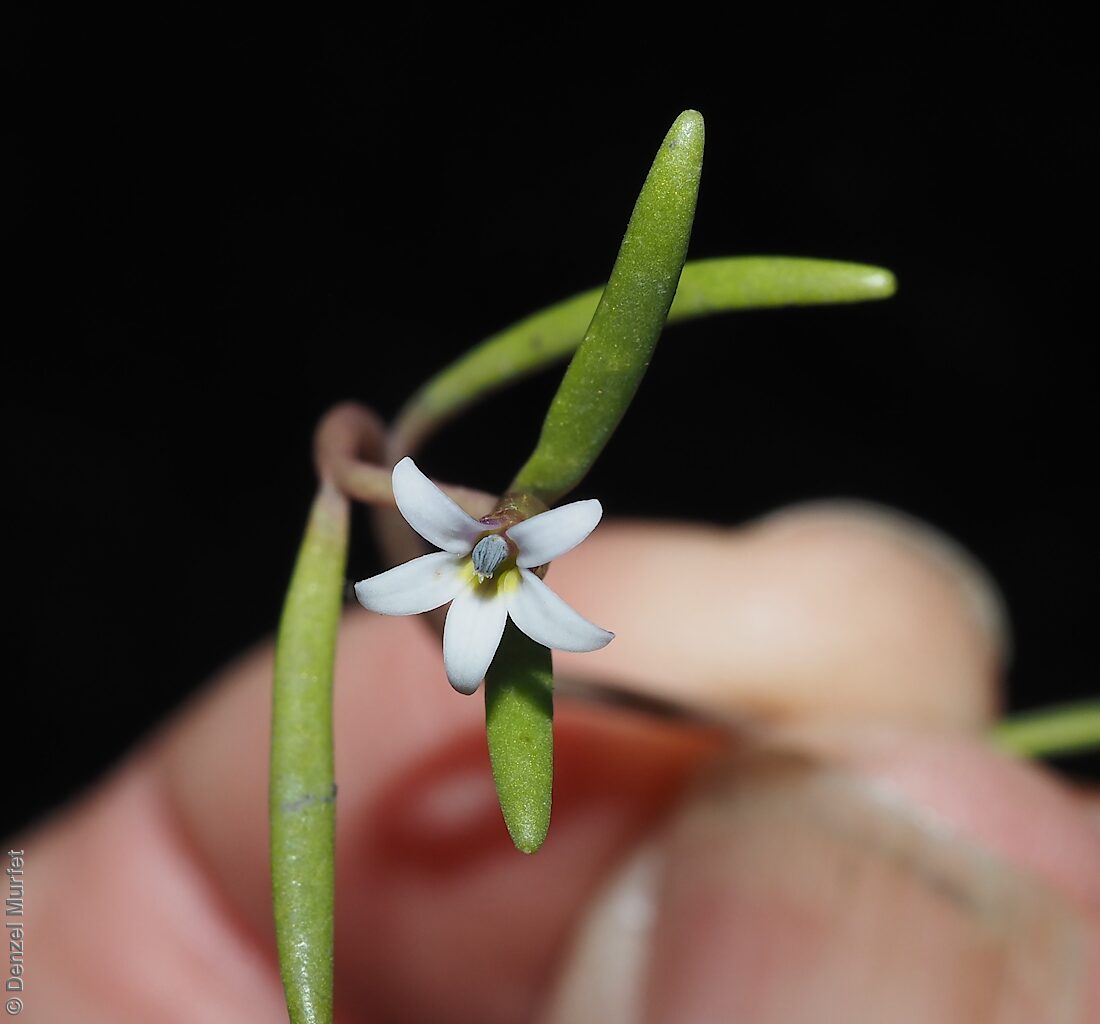
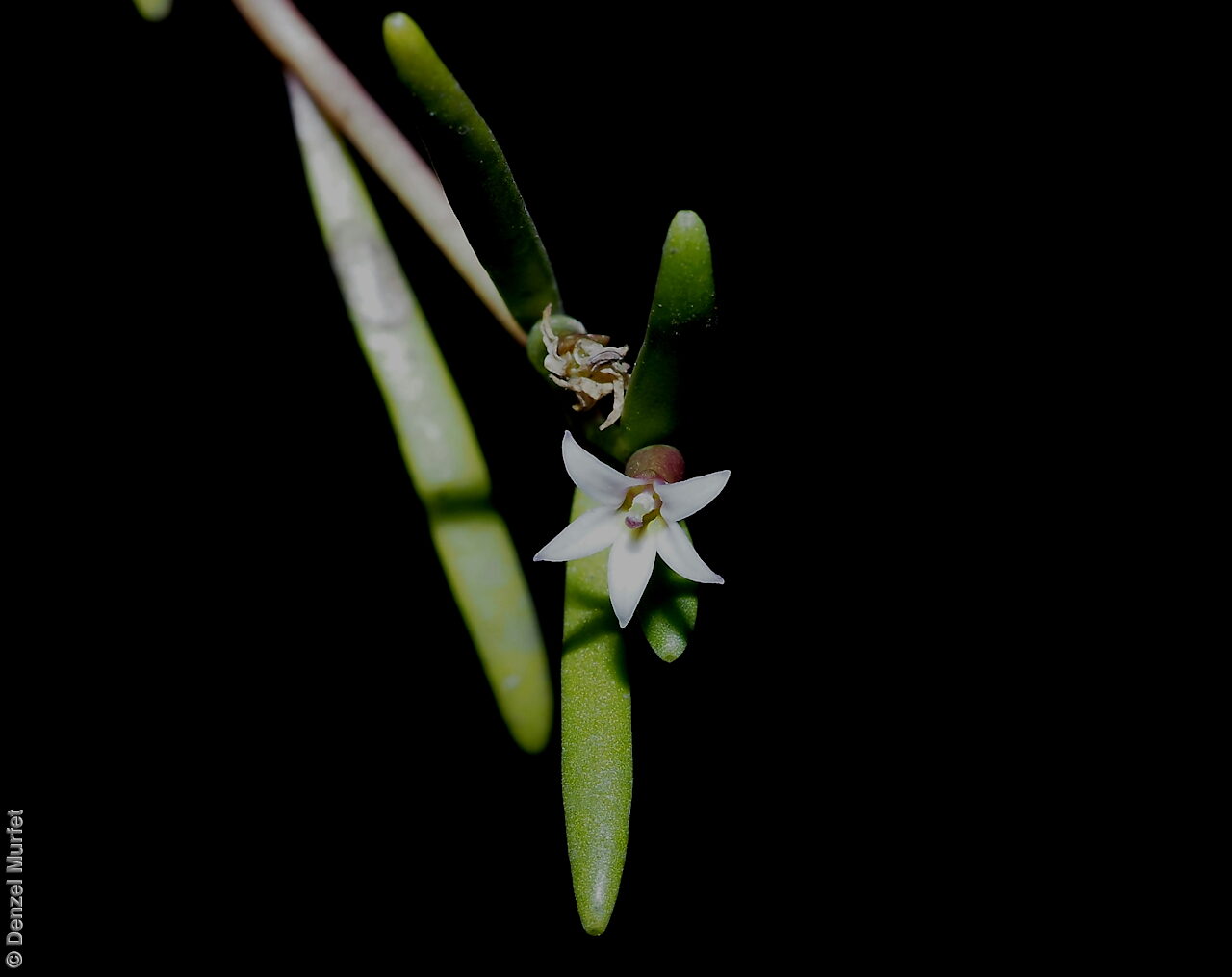
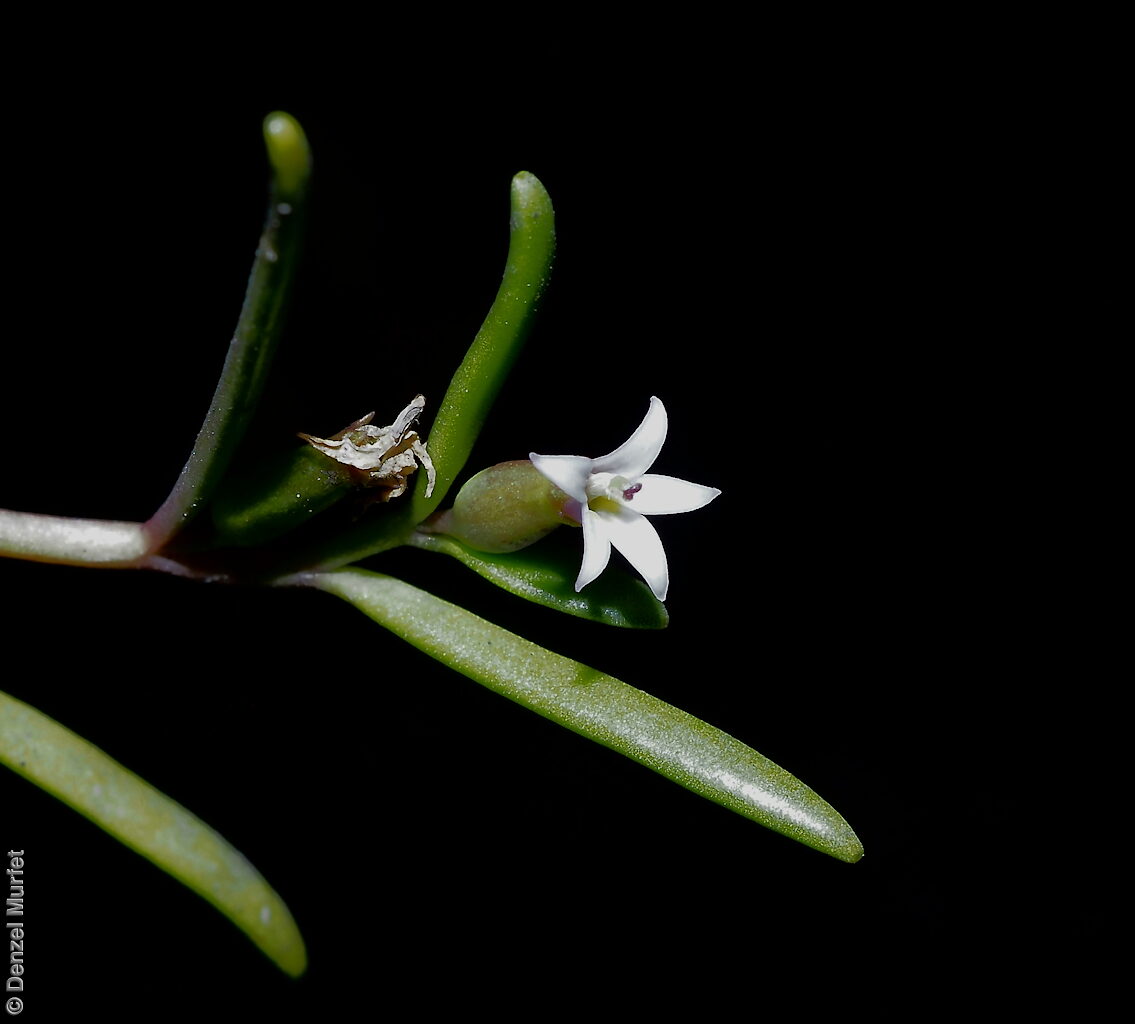
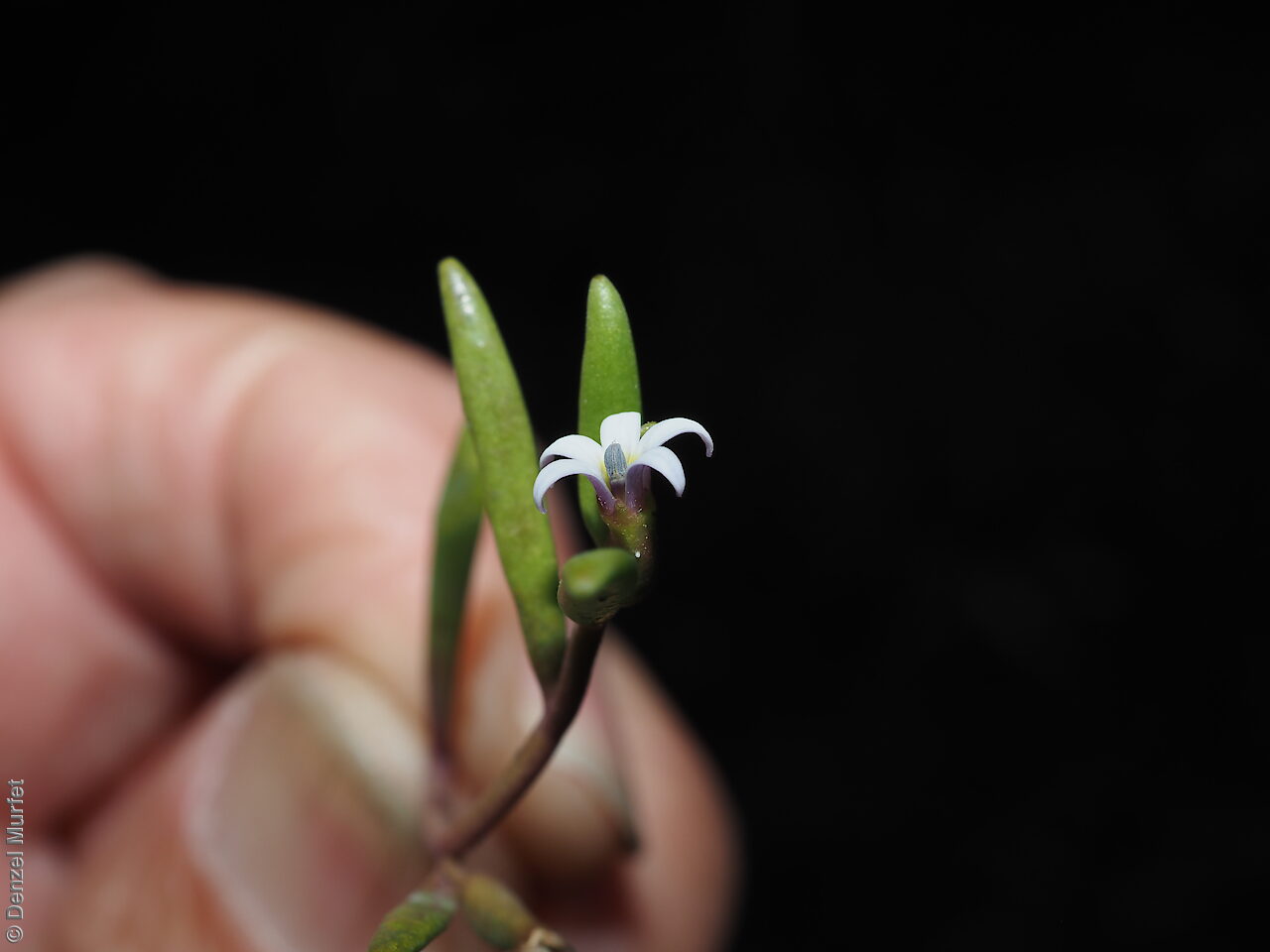
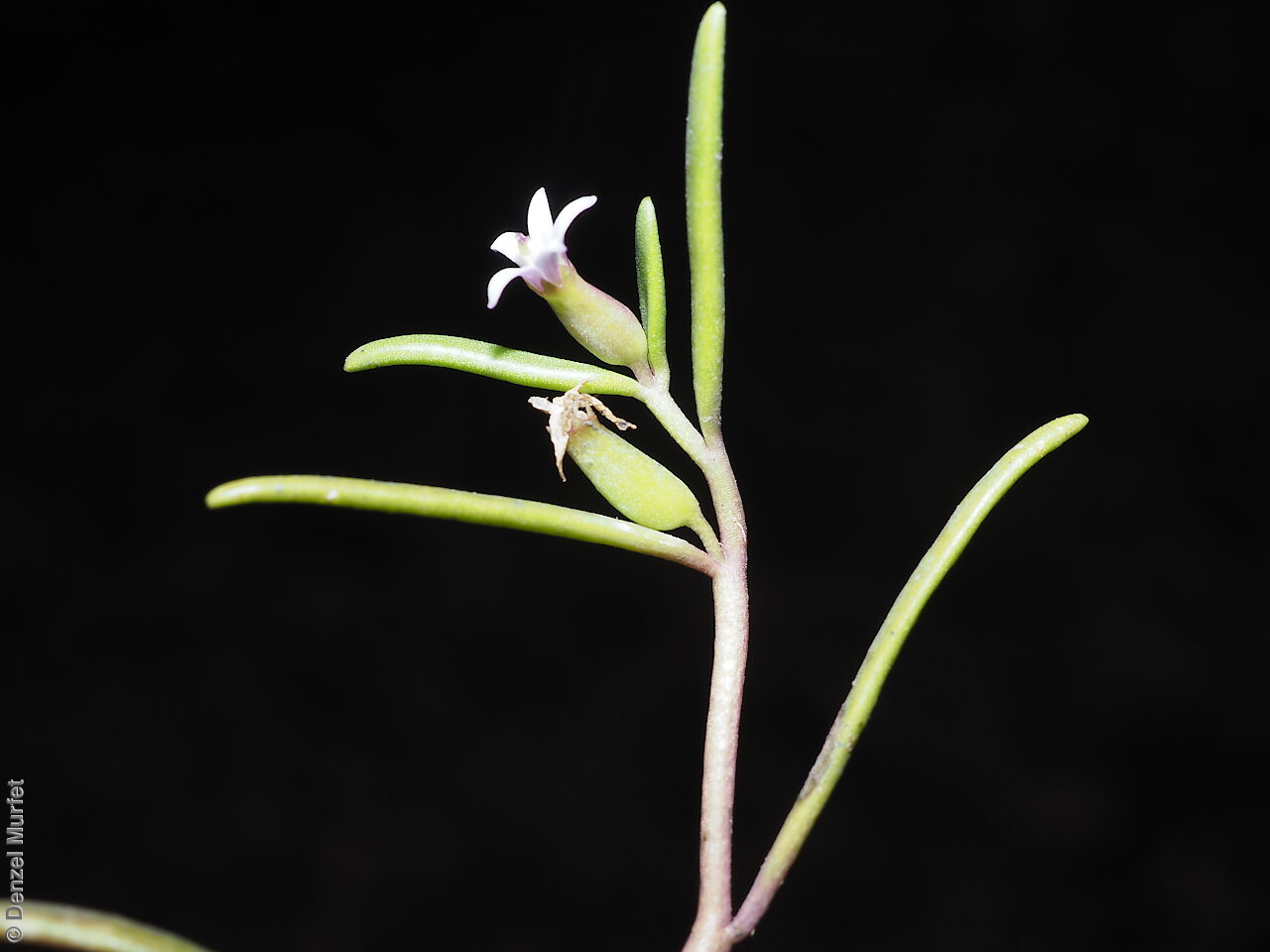
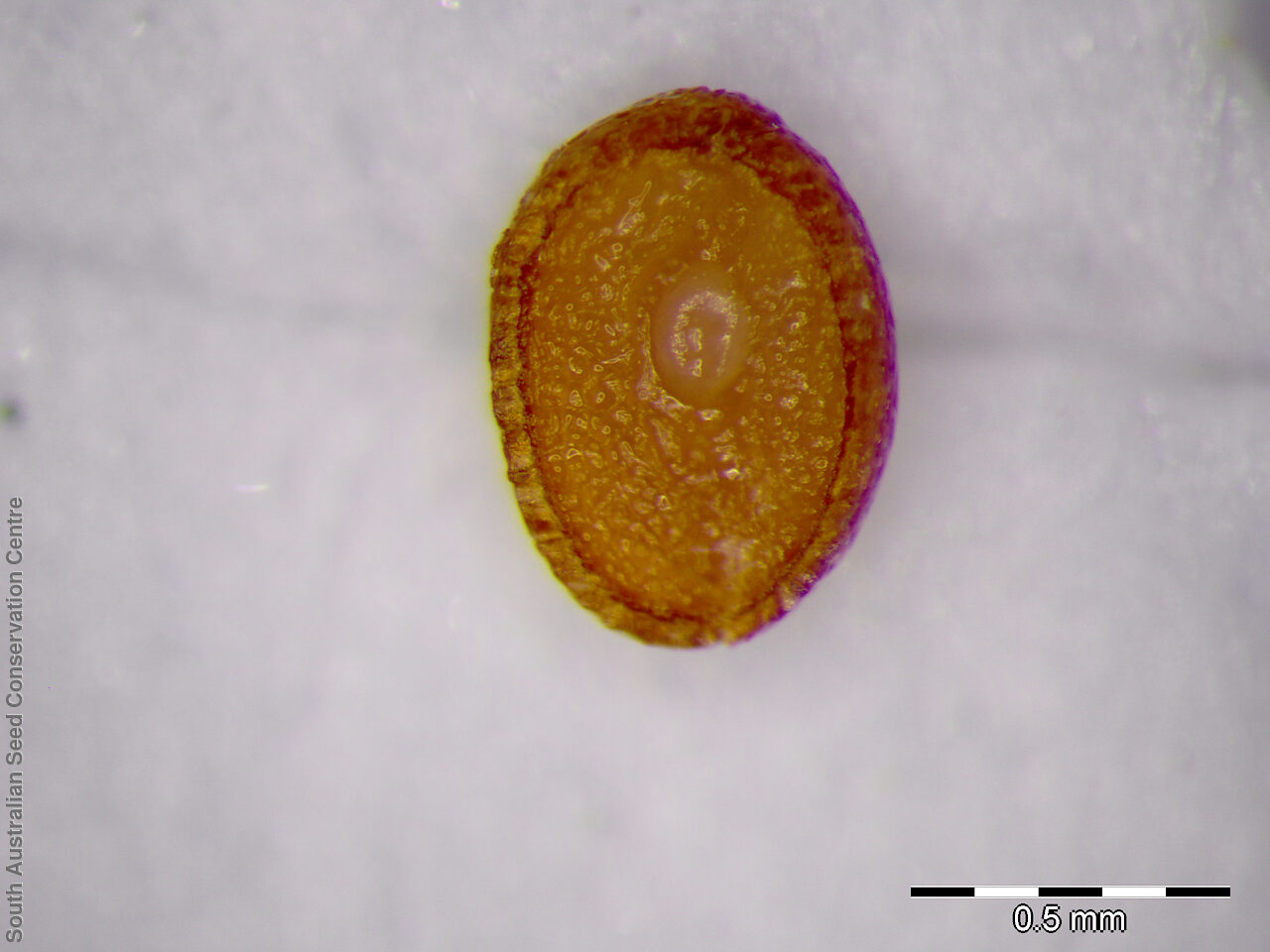
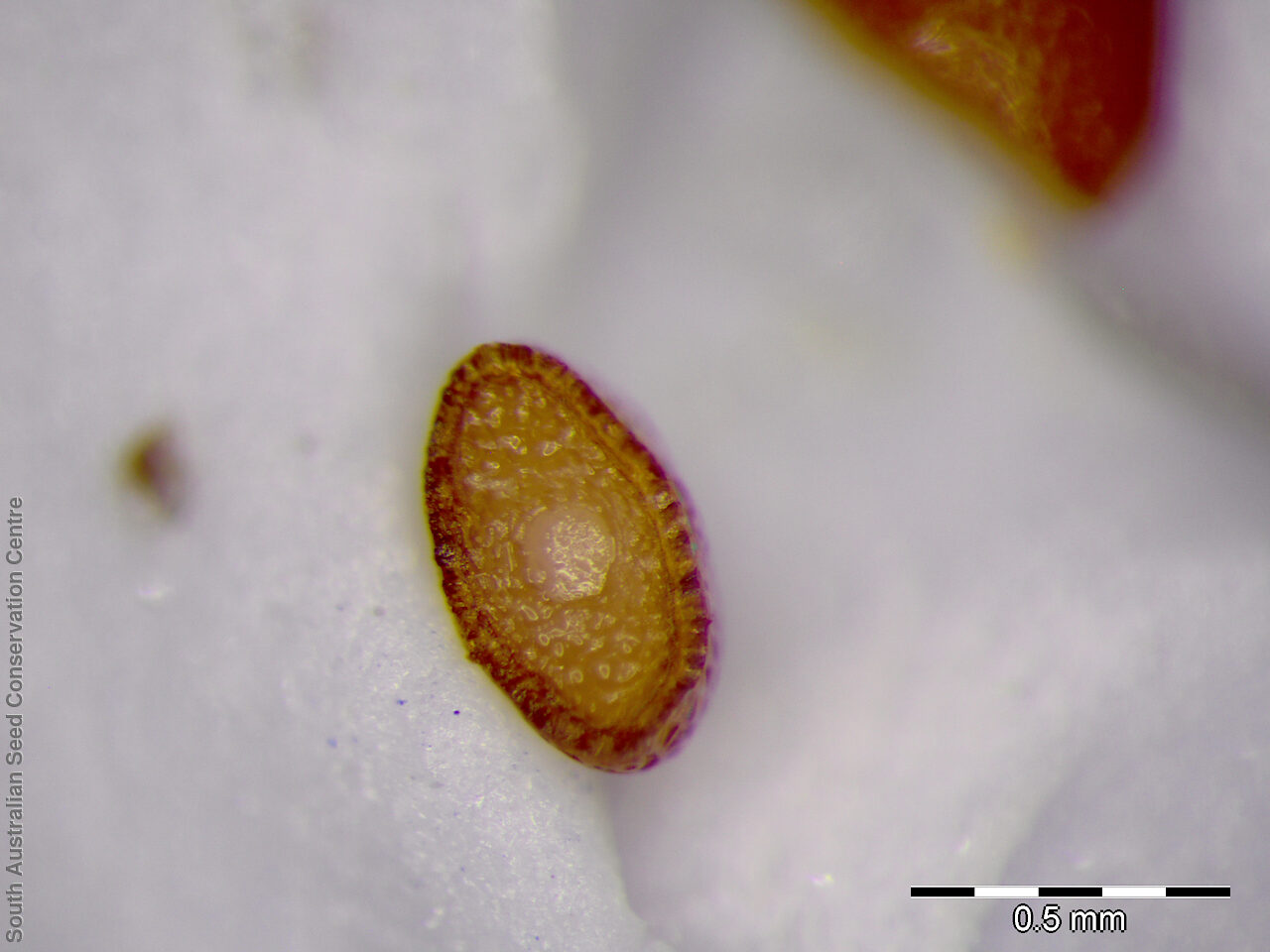


Botanical art
Prior names
Pratia irrigua
Laurentia platycalyx
Lobelia platycalyx
Pratia platycalyx
Common names
Salt Lobelia
Salt Pratia
Etymology
Lobelia, named after Mathias de Lobel (1538-1616), physician to William of Orange and then botanist to James I of England. Irrigua, from Latin meaning watered, alluding to the species' habitat of wet areas.
Distribution and status
Found mainly in the lower South-east in South Australia with other locations on Kangaroo Island and Hindmarsh Island, growing on heavy, seasonally damp soils along watercourses, in saltmarsh, slightly brackish to sub-saline wetlands and damp grassland. Also found in Victoria and Tasmania. Native. Uncommon in South Australia. Common in the other States.
Herbarium regions: Southern Lofty, Kangaroo Island, South Eastern
NRM regions: Adelaide and Mount Lofty Ranges, Kangaroo Island, South East
AVH map: SA distribution map (external link)
Plant description
Procumbent or decumbent, nearly glabrous perennial herb with zigzagged stems and rooting at nodes. Leaves linear to obovate or ovate, to 40 mm long and 8 mm wide; entire or toothed; rather thick, glabrous or occasionally with minute hairs on margins, base tapered gradually. Flowers irregularly spaced along stem; male, female and bisexual flowers superficially similar, with flowers white or mauve-tinged on the back of the lobes and tube. Flowering between September and April. Fruits are brown ovoid to ellipsoid capsule to 8 mm long. Seeds are light-brown ellipsoid, compressed seed. Seed embryo type is linear, under-developed.
Seed collection and propagation
Collect seeds between December and March. Collect mature capsules that are fat, turning a pale straw-colour and containing brown seeds. Can be time consuming to find mature capsules. Place the capsules in a tray and leave to dry for one week. Rub the capsules gently by hand to dislodge the seeds. Use a sieve to separate the unwanted material. Be careful as the seeds are very small. Store the seeds with a desiccant such as dried silica beads or dry rice, in an air tight container in a cool and dry place.
| Location | No. of seeds (weight grams) | Number of plants | Date collected | Collection number Collection location | Date stored | % Viability | Storage temperature |
|---|---|---|---|---|---|---|---|
| BGA MSB | 8,500 (0.83 g) 8,500 (0.83 g) | 200+ | 8-Jan-2009 | DJD1473 South Eastern | 20-Jul-2009 | 100% | -18°C |
Number of plants: This is the number of plants from which the seeds were collected.
Collection location: The Herbarium of South Australia's region name.
% Viability: Percentage of filled healthy seeds determined by a cut test or x-ray.